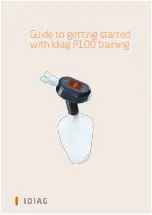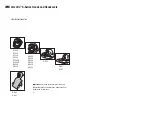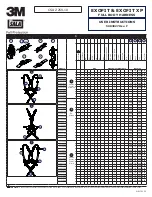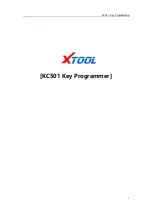
Page 42
8.3
Taking care of the Euroklav
®
23V-S
_____________________________________
8.3.1 Cleaning ________________________________________________________________________
The tray assembly and the autoclave chamber including the contact area of the door gasket and the door
opening should be inspected thoroughly at least once a week for signs of damage or soiling. If necessary,
wipe out the autoclave chamber using a
lint-free cloth
and surgical spirits. This involves withdrawing the
trays and tray guide assembly. Stubborn spots can be removed using small amounts of a mild commercial
steel cleaning agent (pH-levels from 5 to 8). Care must be taken to ensure that cleaning agent does not get
into the pipes attached to the autoclave chamber. The cleaning agent must not contain chlorine and should
not be alkaline. Do not use abrasive cleaning pads, steel wool, or brushes.
Inspect the door seal every week for signs of damage and soiling, and if necessary clean it with a mild
commercial liquid cleaning agent (pH-levels from 5 to 8) or with surgical spirits. If necessary, the seal can be
removed.
The bolt of the door lock (right side) and the door hinge (left side) must be regularly lubricated with silicone
grease (MELAG Art.No. 24355), in order to ensure that the door can easily be locked and unlocked, without
unnecessary wear.
The outer parts of the autoclave can be cleaned with a mild commercial cleaning agent or with surgical
spirits. If water is supplied from and returned to the internal tank, then this should be inspected before
refilling with distilled / demineralized water. Whenever necessary it should be cleaned. The wastewater tank
on the left should be emptied at least every two weeks and washed out with clear mains-supply water. Hard
stains and oily residues may have to be removed using a little washing-up liquid and warm mains-supply
water with a suitable soft brush, followed by swilling with distilled / demineralized water. Should the right tank
need cleaning after a lengthy period of close-loop operation then this should be cleaned in the same way,
and also thoroughly swilled.
8.3.2
Use of demineralized or distilled water _______________________________________________
Quality requirements
For steam sterilization it is necessary to use high quality distilled or demineralized water.
The water used should at least comply with the specifications in accordance with CEN-standard EN 285
listed in the table below.
For the operation of the Euroklav
®
23V-S, however,
battery water in accordance with VDE 510
is sufficient,
as long as the VDE specifications are strictly adhered to (conductivity on production
≤
10
µ
S/cm*
)
, when
used
≤
30
µ
S/cm*
)
, pH-value identical with EN 285, evaporation residues analogous).
Where to purchase the water
Battery water in accordance VDE 510 is widely available in large drug stores, supermarkets and do-it-
yourself stores at low prices. The necessary purity standards must be expressly detailed on the label,
because with insufficiently pure water calcium scaling could form in the steam lines and valves, restricting
the operation of the autoclave. Aggressive water (pH < 5 or > 7) can also lead to damage in the autoclave.
Formation of spots on instruments
The extent to which spots form on the instruments depends on the quality of the water used to produce the
steam.
Specifications for water quality in accordance with the EN 285
Evaporation residue
≤
10 mg/l
Silicon oxide, SiO
2
≤
1 mg/l
Iron
≤
0.2 mg/l
Cadmium
≤
0.005 mg/l
Lead
≤
0.05 mg/l
Other heavy metals
≤
0.1 mg/l
Chlorides (Cl)
≤
2 mg/l
Phosphates (P
2
O
5
)
≤
0.5 mg/l
Conductivity at 20°C
≤
15
µ
S/cm *
pH (degree of acidity)
5 -. 7
Appearance
Colourless; clean; without sediment
Hardness (
Σ
of ions of alkaline earth)
≤
0.02 mmol/l
*
)
µ
S/cm = micro-Siemens per centimetre








































